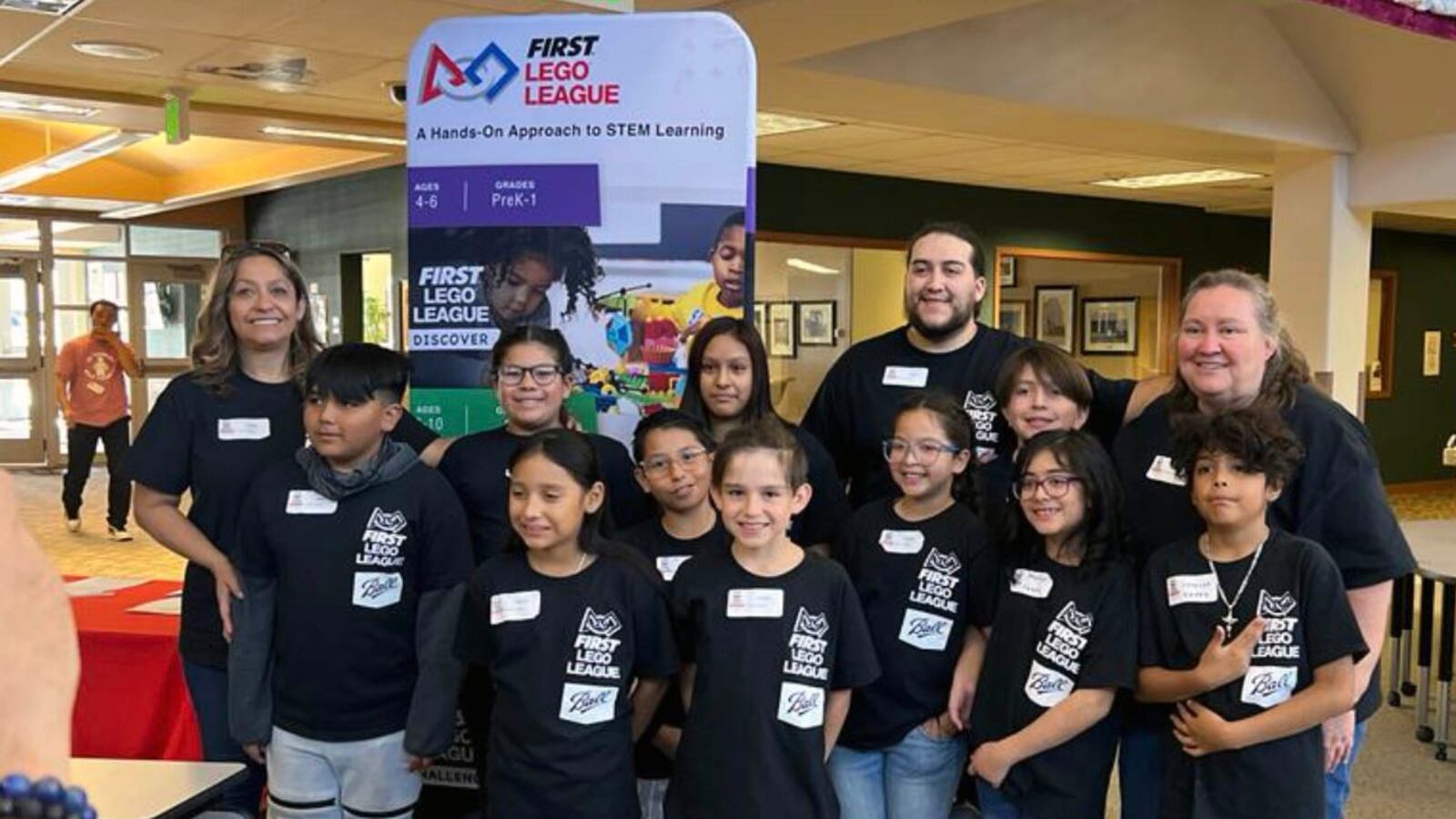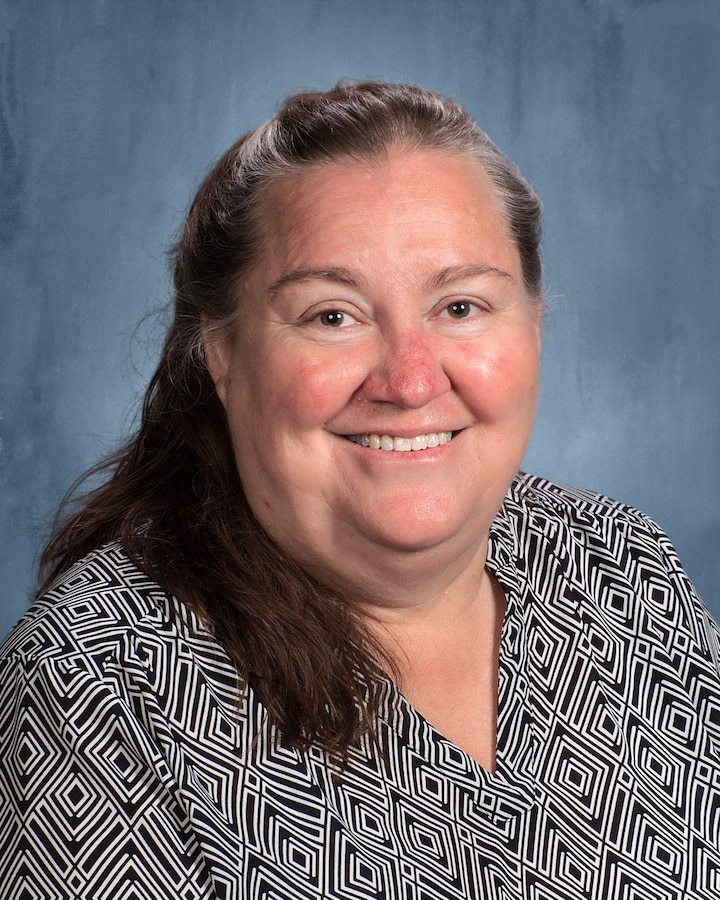This story was originally published by Chalkbeat. Sign up for their newsletters at ckbe.at/newsletters
Ann Schimke, Chalkbeat
Jan 30, 2024 at 8:51pm EST

In second grade, Carlota Loya Hernández spent a lot of time coloring at her desk. She didn’t speak English and her teacher didn’t speak Spanish, so crayons and paper were her go-to activity at school in Colorado’s San Luis Valley.
By middle school, things had changed. Loya Hernández was taking advanced math and headed for even more advanced coursework in high school. Eventually, she earned her college degree and became a teacher in the Boulder Valley School District.
Today, she has a Ph.D. and is a champion for bilingual students, working to ensure they get the educational opportunities they deserve.
“The greatest problem in public schools is a lack of responsiveness to the brilliance and incredible talent evident in each and every child, especially bilingual and multilingual children,” she said.
Loya Hernández, who is a math and gifted and talented specialist at Escuela Bilingüe Pioneer, a dual language immersion school in Boulder Valley, was named the 2023 bilingual elementary teacher of the year by the Colorado Association of Bilingual Education. She talked to Chalkbeat about how she ensured 100% attendance for parent-teacher conferences, what she told the mother of a class clown, and why she worries about anti-immigrant sentiments.

Was there a moment when you decided to become a teacher?
As a middle and high school student, I was trained as a peer tutor because my fellow students would often come to me for help. In college, I tutored other students in math and science. I never planned to become a teacher and wanted to become an architectural engineer due to my love of both math and art. But it was my calling.
I dropped out of college due to financial hardship and a lack of knowledge about financial aid. I got a job as a restaurant manager and began my career with the Boulder Valley district as a native language tutor. I greatly enjoyed working with immigrant and refugee students who were often ignored or not supported in the mainstream classroom. This angered me and propelled me to go back to college and get a teaching degree.
How did your own experience in school influence your approach to teaching?
I remember my first day in second grade in Center Elementary School. We had just moved to the San Luis Valley from Silverton. I had bilingual support in kindergarten and first grade as I was new to the country, but in second grade it was sink or swim. My teacher did not understand me, and I did not understand her. She gave me crayons and let me color. I was happy as could be as I loved art.
By middle school, I was pulled for an advanced math class. I was in advanced language arts, math, and science in high school. As the child of farm workers with few resources at home, the school became a safe haven. I thrived in all my classes, except PE. The only C I received was in PE because I had to dress for class. My father did not allow me to wear shorts nor did I have the means to buy sweatpants.
Center High School opened the door to a world of opportunities and nominated me for the Spud Bowl Scholarship at Adams State College in Alamosa — now Adams State University. When I won the full-ride scholarship, it was the key to accessing higher education and a future full of possibilities. It became my ticket out of poverty.
Tell us about a favorite lesson to teach.
I love to develop lessons that really connect with students, impact their thinking, and help them understand important concepts. To teach important math concepts, such as fractions, decimals and percentages, I created a lesson using the book ”If the World Were a Village” by David J. Smith.
The focus was very mathematical, but students were able to analyze the data and come to their own conclusions. The lesson allowed my students to think beyond their own existence in their town, past borders, and to grapple with the grave inequities in educational access, medical care, basic living conditions, such as access to clean water, housing, and sewage, and to imagine the great poverty of so many that are literally starving to death. It allowed us to understand how grateful we should be for all we have in the U.S., how fortunate we are, and the great amount of opportunity we have.
What is the biggest challenge your bilingual students face?
The systems of oppression in all realms of students’ lives. Racist manifestations include dual-language programs tailored to white families. The majority of the students in our district who earn a Seal of Biliteracy, showing that they can read and write in both English and a non-English language, are not heritage speakers of the non-English language.
Bilingual students continue to be overrepresented in special education, discipline referrals, and alternative schools with technical tracks instead of pre-collegiate programs and AP/IB coursework. They are underrepresented in advanced coursework in all areas, including Spanish. [Often], they are not identified as gifted and talented.
These are the systems I fight against daily. In my three semesters at Escuela Bilingüe Pioneer, we have 25 students in advanced math just in fourth and fifth grades. There were only six students when I started at Pioneer. There are another 30-40 students in the younger grades who are in the pipeline for advanced math.
As a data nerd, I monitor students’ progress and identify students that have high ability, in both math and biliteracy (both languages). We are in our third year of the Boulder Universal Advanced Math Program which serves students in fourth and fifth grade.
Most district and school leaders do not focus on the high end of achievement. There is an urgency to work on the “gap,” but, that does little to improve a school. We must develop a mentality of talent development and advanced learning opportunities to raise the bar.
What unique strengths do you observe in your bilingual students?
Bilingual/multilingual students are above standard, although the fixation is that they are below grade level. They rise to a higher level of language and overall academic and social achievement. They are the future of our society as they are globally minded citizens and will be the caretakers of the planet. Bilingual/multilingual students have more social conscientiousness in respecting and valuing differences — whether it is cultural, linguistic, religious, spiritual, or otherwise.
Tell us about a memorable time — good or bad — when contact with a student’s family changed your perspective or approach.
My parents were never able to go to my school when I was a child as they worked all day in the lettuce or potato fields and arrived late from work. They had no medical care or benefits, so they could not afford to miss work. As a teacher, I made sure I stayed late and did home visits if necessary to connect with my students’ parents. I always aimed for and achieved 100% attendance at my conferences.
In my 30 years as an educator, I never saw a parent that did not care for their child. The idea that parents do not care, that they are ill-equipped to support their child, has cruel and racist underpinnings that contribute to the deficit perspective of students of color, especially immigrant and refugee populations. On the contrary, families have walked across the continent, fled danger and hunger in their home country, leaving everything and everyone behind so they can provide the best opportunity for their child’s future.
One time, I called a mom whose son was the class clown. He was a brilliant child who refused to do his work. He was disruptive to the class as he was always off-task and hilarious. The mom answered the phone with, “What did Mario do now?” She was on speaker phone and both Mario and the class heard her response. I could not help but chuckle a bit as I was calling to congratulate her on how well Mario had done on a test or activity. But that child was and is brilliant. I am sure he is a very successful and highly bilingual citizen contributing to society. He was not compliant at all times but he had incredible potential. It was as obvious as day to me; but not everyone is able to see beyond a student’s color, background, or behavior.
What’s something happening in the community that affects what goes on in your classroom?
The anti-immigrant sentiment in this country, police killings of Latinx and Black people, the prison systems that keep parents from their children, the threat of social services, the lack of community resources such as basic housing, food, medical care, a living wage, and safety all impact our students. The election of a president — Donald Trump — with all of that hate in his speech and actions brought fear and anguish into bilingual schools.
Students were crying as teachers were in shock. I had to stay home that day as I could not deal with the reality of the election. This fear has returned in 2024 as the hate returns to impact every student of color and limit their humanity and threaten the well-being and safety of their families.
What are you reading for enjoyment?
“Punished for Dreaming: How School Reform Harms Black Children and How We Heal” and “We Want to Do More than Survive,” both by Bettina L. Love. I have become very interested in this type of scholarship that addresses and exposes the root causes of educational and social inequities in schooling and society. This might be the focus for the next phase of my life; to teach the next generation the history of racism and oppression in the U.S. so they can contribute to changing society to be more equitable.
Ann Schimke is a senior reporter at Chalkbeat, covering early childhood issues and early literacy. Contact Ann at aschimke@chalkbeat.org.
Chalkbeat is a nonprofit news site covering educational change in public schools.
